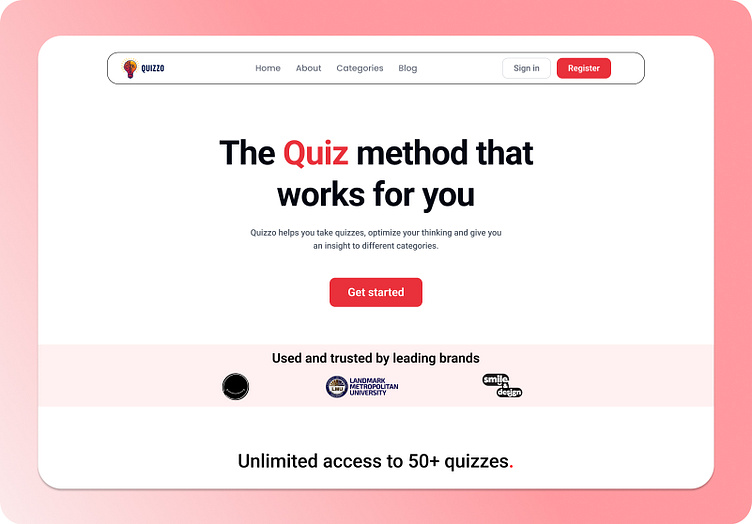QUIZZO A Quiz web app that allows users to take quizzes
Report: User Interface Design Process for Quizzo
Introduction
This report outlines the design process undertaken for the user interface (UI) of Quizzo, a web application that enables users to create accounts, log in, take quizzes on various subjects, and receive immediate feedback. The design process followed a user-centric approach, prioritizing user needs and experiences to create an intuitive and engaging interface.
Design Process
1. User Research and Analysis
User Interviews: Conducted in-depth interviews with potential users to understand their expectations, preferences, and pain points related to online quizzes.
Competitor Analysis: Evaluated existing quiz platforms to identify strengths, weaknesses, and opportunities for differentiation.
User Personas: Developed detailed user personas to represent different user segments and their characteristics, goals, and behaviors.
User Journey Mapping: Created visual representations of user interactions with the application to identify potential pain points and opportunities for improvement.
2. Information Architecture (IA)
Content Inventory: Defined the content types and structure required for the application, including quizzes, user profiles, and feedback mechanisms.
Site Map: Created a hierarchical representation of the website's structure to organize content and navigation effectively.
Card Sorting: Conducted card sorting exercises with users to validate the IA and identify potential improvements.
3. Wireframing and prototyping
Low-Fidelity Wireframes: Created simple sketches to visualize the layout and content arrangement of different screens.
High-Fidelity Wireframes: Developed detailed wireframes with visual elements to represent the final design appearance.
Interactive Prototyping: Built interactive prototypes to simulate user flows and test usability.
4. Visual Design
Style Guide: Defined the visual language, color palette, typography, and imagery for the application.
UI Kit: Created a comprehensive library of reusable UI components for consistency and efficiency.
Visual Design Implementation: Applied the style guide to the wireframes to create visually appealing and engaging designs.
5. Usability Testing
Usability Testing: Conducted usability tests with representative users to identify usability issues and gather feedback.
Iterative Design: Incorporated user feedback to refine the design and improve the user experience.
6. Development and Implementation
User-Centered Approach: Prioritized user needs and preferences throughout the design process.
Consistency: Maintained consistent visual language and interaction patterns across the application.
Accessibility: Ensured the UI is accessible to users with disabilities by adhering to accessibility guidelines.
Responsiveness: Designed the UI to adapt to different screen sizes and devices.
Performance: Optimized the UI for fast loading times and smooth interactions.


